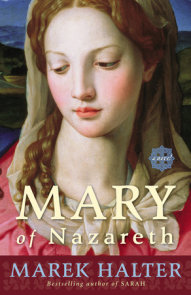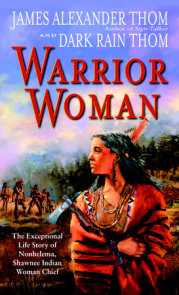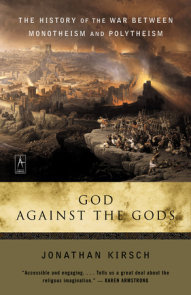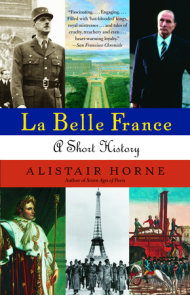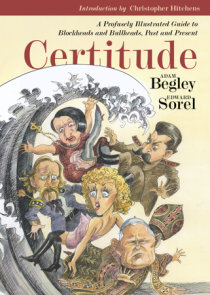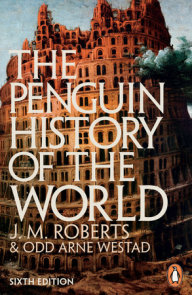READERS GUIDE
Philip Caputo’s The Voyage is a multilayered novel that unfolds simultaneously as a mystery, a coming-of-age nautical adventure, a family drama, and a snapshot of an era. The questions, discussion topics, and author biography that follow are intended to enhance your group’s reading of this gripping story that transcends time to become a testimony of the American experience.On a beautiful June day in New England at the end of the nineteenth century, Cyrus Braithwaite, a self-made Boston industrialist and former Florida ship wrecker, sends his three teenage sons off on their yacht and mysteriously tells them not to return until the end of the summer. His parting words–"It’s a new century, boys"–ring in Nathaniel’s, Eliot’s, and Drew’s minds as they set sail aboard the Double Eagle down the East Coast to the Florida Keys and are finally shipwrecked off the coast of Havana. Left behind are the boys mother, who is in a hospital in Boston recovering from a hysterectomy and Cyrus’ son, the boys’ half-brother, Lockwood. Today, at the end of the twentieth century, the details of the brothers’ voyage are pieced together from ship logs and ancestral diaries by Sybil Braithwaite, their descendant.
After picking up Will, their college friend in Maine, the boys decide to sail to the Florida Keys where Cyrus’s last wreck, the Annisquam, lies below the remote key of Dry Tortugas. After days of sailing, they weather a storm that brings them near Beaufort, South Carolina, their mother’s birthplace. In search of funds to repair their vessel, they visit their mother’s wealthy aunt whom they have never met. While there, questions and suspicions about their mother’s past begin to surface.
Determined to reach their destination, the boys continue sailing the repaired boat to the Florida Keys in search of their father’s former first mate who holds the secret of their Cyrus’s last maritime adventure. Although they triumphantly reach the remains of the sunken Annisquam, the sea and the weather conspire against the sailors. They find themselves stranded in Havana with no easy passage home.
As Sybil attempts to solve the mystery of her ancestors’ journey, she unearths the family’s deepest secrets and a shameful, inescapable truth. The supreme power of the sea, the enduring hand of history, and the strength of family collide in The Voyage‘s explosive conclusion.
Questions and Topics for Discussion
1. For Discussion: The Tiny One
Given the subject matter, one might assume The Tiny One to be a dark book indeed. Yet Minot’s novel teems with joy, and leaves the reader uplifted. How does the author accomplish this effect?
2. How are the American North and South portrayed in the novel? How does Havana compare to the United States? How does the geographical journey of the Double Eagle allegorically retrace in reverse the history of the United States?
3. The Voyage is narrated by an old friend of Sybil’s (who makes her debut on p. 20), and the story itself is "imagined" by Sybil as she reconstructs the past. Is this double layer of narration effective as a literary device? Does the narrator’s presence detract from or promote the retelling of the story? The narrator explains, "Sybil has had to fill in the vast empty spaces in the chronicle by making things up . . . " [p. 20]. Does knowing Sybil "imagined" the story detract from the believability and realism of the tale? How, if at all, is the reader affected by learning in the epilogue that the narrator is a female college roommate of Sybil’s? How do Sybil’s personal circumstances and her relationship with her family color her "retelling" of her ancestors’ story?
4. How does the epigraph attributed to Joseph Conrad foreshadow the events on the sea? Is the sea a friend or foe to Nathaniel and his brothers? To Cyrus?
5. What is the significance of the names the author selected for the boys’ vessel, Double Eagle, and that of Cyrus, Main Chance?
6. What did Cyrus mean when he said "It’s a new century, boys. Yes, indeed, a brand-new century" [p. 19]? Or, what did Sybil mean when she "imagined" Cyrus saying this? The "new century" motif appears four more times in the novel in different contexts (p. 170, 191, 232, and 273). How does this motif weave the themes of the book together? How is the twentieht century contrasted with the nineteenth century in the novel?
7. As Sybil describes it, "[T]he Braithwaites were more a tribe than a family, and more than a tribe, a consanguineous commonwealth of patriarchs, and matriarchs, aunts, uncles, first, second, and third cousins" [p. 22]. The concept of family takes on almost mythic proportions in the beginning of the novel–how are these myths simultaneously shattered and upheld along Sybil’s path to discovery? How is this image of a family and the subsequent deconstruction of this image a metaphor for the deconstruction of American history?
8. Prior to their trip, Nat "could not conceive of anything bad happening to him, simply because nothing ever had" [p. 143]. Later, Nat is filled with "self-loathing" as he is overwhelmed by his multitude of failures on the voyage [p. 321]. What "bad" things happen to Nat on the voyage? How is The Voyage a coming-of-age story for Nat? For the other boys? Does that necessitate a loss of innocence? Does it result in a loss or gain of confidence for each of the boys? What are the lessons learned by the boys, if any?
9. What is the significance of the subplot involving the wreck of the Annisquam to Sybil’s family history? To the explanation of Cyrus’s behavior towards his family?
10. Nat uses a nearly biblical metaphor recalling the creation story to describe the creation of a sailing vessel as "more even than art. . . . It was as if the men who designed and built her somehow endowed her with aspects of themselves, their various traits seeping with their sweat into her ribs and knees and bowels . . . " [p. 54]. The boys view Southern Cross at the site of the Annisquam. [p. 273] Cyrus quotes the Bible in his cryptic telegram to Havana [p. 375]. How do the religious and biblical overtones build a sense of moral inevitability in the novel’s conclusion, i.e. "the sins of the fathers. . . ."? At the same time, along their journey, the boys incant seafaring superstition, and Caputo peppers The Voyage with sea shanties. Does superstition undermine the religious tenets of the novel? Upon which, religion or superstition, do the boys rely more? Are religion and superstition compatible on the sea? In the novel?
11. How would you describe the mood of the novel? Does it change from land to sea?
12. In the character of Gertrude Williams the reader gets a glimpse of the women’s emancipation movement brewing at the turn of the nineteenth century. How are the situations of other female characters (the boys’ mother, Aunt Judith, Elvira) symbolic of women’s emancipation and the theme of emancipation in American history in general?
13. After weathering the lengthy battle with the sea along with the boys, how is the reader affected by the contrasting subplot of Will’s illicit romance with Elvira [Chapter 24]? How does this subplot serve as a microcosm of the mysterious history of the Braithwaite family?
14. After weathering the lengthy battle with the sea along with the boys, how is the reader affected by the contrasting subplot of Will’s illicit romance with Elvira [Chapter 24]? How does this subplot serve as a microcosm of the mysterious history of the Braithwaite family?
About this Author
Philip Caputo was raised in the Chicago suburbs. After college, he served with the Marines for three years, including sixteen months in Vietnam, and then spent six years as a foreign correspondent for the Chicago Tribune in Italy, the Soviet Union, the Middle East, and Vietnam. He was held hostage in Beirut in 1973, and upon his release, learned of his shared 1972 Pulitzer Prize for reporting on election fraud in Chicago. Two years later, he was wounded in Beirut, and, during his convalescence, completed the manuscript for A Rumor of War, a Vietnam memoir that was published while Caputo was in Moscow, back on assignment for the Tribune. In 1977, he left the Tribune and turned to novels, of which he has written four, as well as another memoir (Means of Escape) and a collection of three novellas, Exiles. He currently lives in Norwalk, Connecticut with his wife, Leslie Blanchard Ware.Caputo attributes the planting of the seed for plot of The Voyage to his late father-in-law, John Ware, who passed on an intriguing tale he’d heard from a cousin about their grandfather. According to the tale, William Mimms Ware had put his four sons on a schooner called Holly in 1899 and, giving them each ten dollars, told them not to return until September. They were shipwrecked in Havana in August and sent a telegram to their father asking for money for the passage home–which, unlike Cyrus, he provided. Caputo stresses that the story of the Wares merely raised interesting questions leading to the imagined tale that is The Voyage; the Braithwaites’ story is not at all intended to be a fictionalized history of the story of the Wares’ adventure. Besides drawing upon his own experience as a deep-sea fisherman, Caputo conducted extensive research to prepare for the writing of The Voyage–including reading, interviewing sailors and yachtsmen, and chartering his own yacht from the Caribbean to Newport, Rhode Island.










